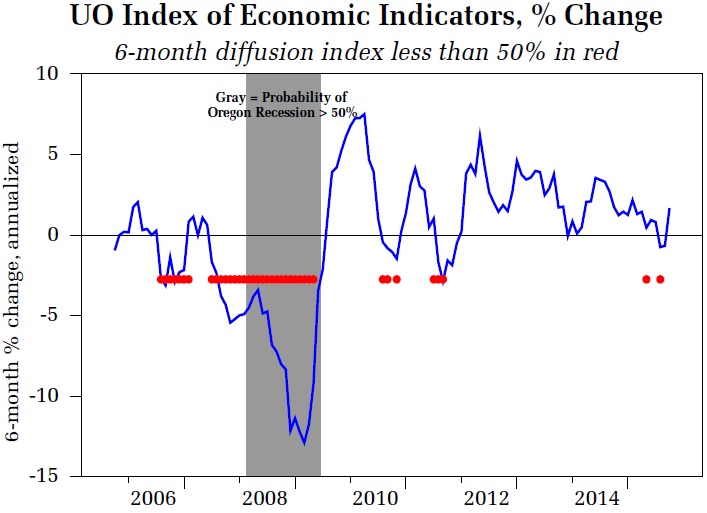 University of Oregon Regional Economic Indexes
University of Oregon Regional Economic Indexes
By Tim Duy
Oregon Economic Forum
University of Oregon
Oregon Economic Indicators:
The Oregon Measure of Economic Activity rebounded from an upwardly revised September number. As expected, the steep job losses reported in September were almost entirely revised away with the October employment report. Highlights of the report include:
– In October, the manufacturing sector made a neutral contribution as the negative impact of national manufacturing indicators was offset by stronger Oregon manufacturing labor-related data. Construction employment boosted that sector while housing permits were neutral.
– Labor indicators – initial unemployment claims, labor force, and employment services jobs – bolstered the household sector. Also, a rebound in equity prices pushed the contribution from the S&P 500 component back into positive territory. Some soft employment numbers weighed on the services sector.
– The University of Oregon Index of Economic Indicators rose 0.9% in October, more than reversing declines of the previous two months. Initial unemployment claims fell while employment services payrolls – mostly temporary help workers – rose. Both indicators suggest a solid labor market likely to continue to add jobs.
– Residential building permits (smoothed) climbed modestly. Core manufacturing orders (a national indicator) and average weekly hours worked in manufacturing both edged modestly higher. The Oregon weight distance tax (a measure of trucking activity) fell.
Despite choppy data, the two indicators suggest ongoing growth in Oregon at an above average pace of activity. Note that the UO Index is likely too show more sideways movement characterized by occasional declines. The ongoing US economic expansion provides sufficient support to sustain Oregon’s economy for the foreseeable future.
Disclaimer: Articles featured on Oregon Report are the creation, responsibility and opinion of the authoring individual or organization which is featured at the top of every article.

